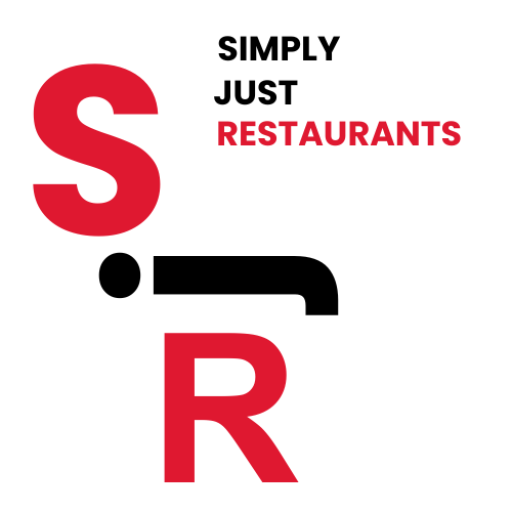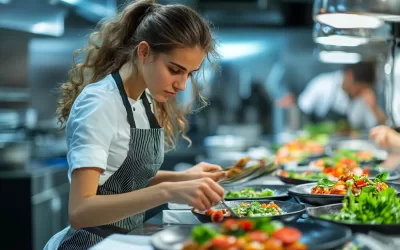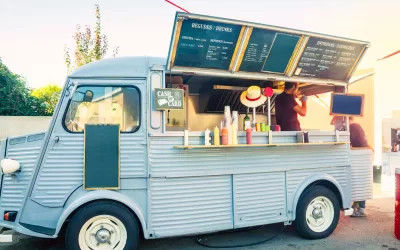Designing the walls of a restaurant is a critical aspect of the overall interior design process. Walls are not only a functional part of a building’s structure, but they also serve as one of the most visible and significant design elements in a restaurant. Wall design influences the ambiance, reinforces the restaurant’s concept, and enhances the dining experience by making the space more visually appealing and comfortable for customers.
In this comprehensive guide, we will explore everything you need to know about restaurant wall design, including material choices, color schemes, textures, decorative elements, lighting, and how to balance aesthetics with practicality.
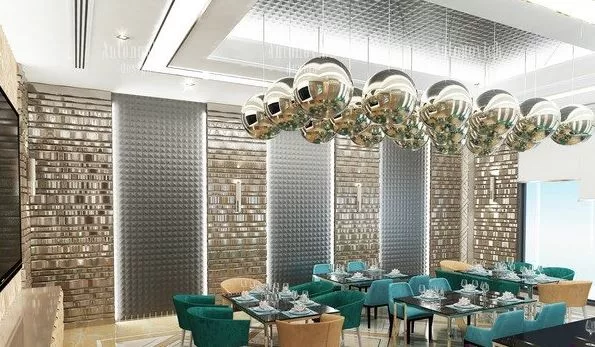
1. Understanding the Importance of Wall Design
-
The design of restaurant walls goes beyond aesthetics; it plays a fundamental role in creating the overall atmosphere. The right wall design can:
- Set the tone for the dining experience, whether it’s casual, elegant, modern, or rustic.
- Reflect the restaurant’s brand and concept, making it more memorable for customers.
- Influence how spacious or intimate a room feels.
- Help with practical considerations such as acoustics and lighting.
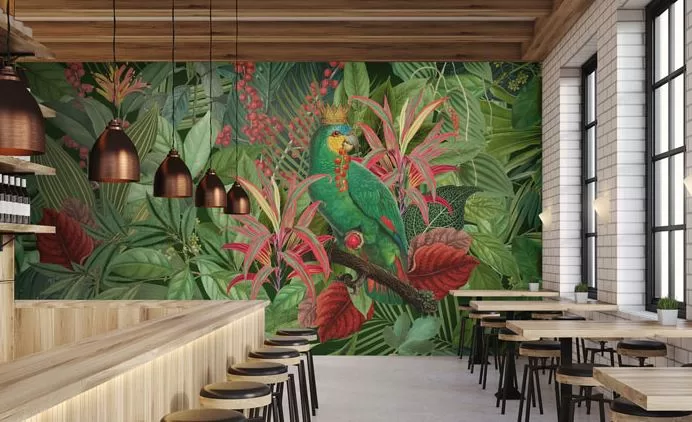
2. Choosing Materials for Restaurant Walls
-
Selecting the right materials for the walls is a foundational step in the design process. Different materials offer varying textures, colors, and durability, which are important considerations in a restaurant setting.
2.1. Painted Walls
- Versatility: Paint is one of the most versatile and cost-effective options for restaurant walls. With countless color options, you can create the desired mood and atmosphere.
- Durability: High-quality, washable paints are ideal for restaurants, as they can withstand stains and are easy to clean.
- Customization: Custom colors, accent walls, and patterns can help in creating a unique look.
2.2. Wood Paneling
- Warmth and Texture: Wood adds warmth, texture, and natural beauty to a restaurant’s interior. Depending on the type of wood and the finish, it can work in various styles, from rustic and traditional to modern and minimalist.
- Sustainability: Many restaurants, particularly those with a focus on eco-friendliness, prefer reclaimed or sustainably sourced wood.
- Maintenance: Wood is durable but may require regular maintenance, especially in high-traffic areas, to prevent damage and wear.
2.3. Brick and Stone Walls
- Industrial and Rustic Appeal: Exposed brick or stone is often used to create an industrial, rustic, or urban look. These materials add an earthy, natural element to the design and can become focal points within the restaurant.
- Durability: Both brick and stone are highly durable and low-maintenance, making them ideal for areas that see a lot of wear and tear.
- Acoustic Considerations: Brick and stone can create acoustic challenges by amplifying sound, so they may need to be balanced with softer materials like fabric or wood to control noise levels.
2.4. Tiles
- Easy to Clean: Tiles are often used in areas where hygiene is a top priority, such as near kitchens or restrooms. However, they can also be used decoratively in the main dining area.
- Variety of Styles: Tiles come in a wide range of colors, shapes, and finishes, from modern geometric designs to traditional mosaics.
- Durability: Tiles are highly durable and easy to maintain, making them a practical choice for high-traffic areas.
2.5. Wallpaper
- Patterns and Textures: Wallpaper allows for creative patterns, textures, and prints that might not be achievable with paint. It can be used to create feature walls that draw attention and add character.
- Durability Concerns: Modern wallpapers are more durable and easier to clean than in the past, but they may still be susceptible to wear in high-traffic or high-moisture areas.
- Flexibility: Peel-and-stick wallpaper options allow for flexibility and easy updates without a permanent commitment.
2.6. Mirrors and Glass
- Illusion of Space: Mirrors can make a small restaurant appear larger by reflecting light and creating a sense of openness.
- Design Element: Decorative mirrors, or even mirrored tiles, can add elegance and sophistication to the space.
- Care and Maintenance: Glass and mirrors require regular cleaning to avoid fingerprints and smudges, but they offer a sleek, modern look when well-maintained.
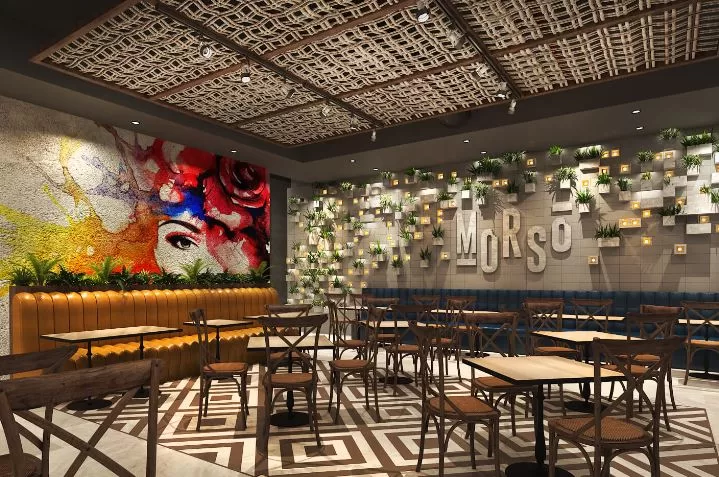
3. Color Schemes and Mood Setting
-
Color is one of the most powerful tools in wall design, as it can influence the mood and perception of a space. In a restaurant, color choice should align with the overall concept and target demographic.
3.1. Warm Colors
- Red, Orange, Yellow: Warm colors can stimulate appetite and create an inviting, energetic atmosphere. They are often used in fast-casual and family restaurants, where a lively, sociable environment is desired.
3.2. Cool Colors
- Blue, Green, Purple: Cool colors are calming and can create a sense of tranquility. These colors are often found in upscale or fine dining restaurants where a more relaxed, elegant atmosphere is preferred.
3.3. Neutral Colors
- White, Beige, Gray: Neutrals are versatile and can serve as a backdrop for other design elements. They are commonly used in modern and minimalist restaurants to create a clean, uncluttered look.
3.4. Accent Colors
- Pop of Color: Using a bold accent color on one wall or in specific areas can make the design more dynamic and visually interesting. Accent walls are especially effective in drawing attention to certain areas, such as the bar or seating sections.
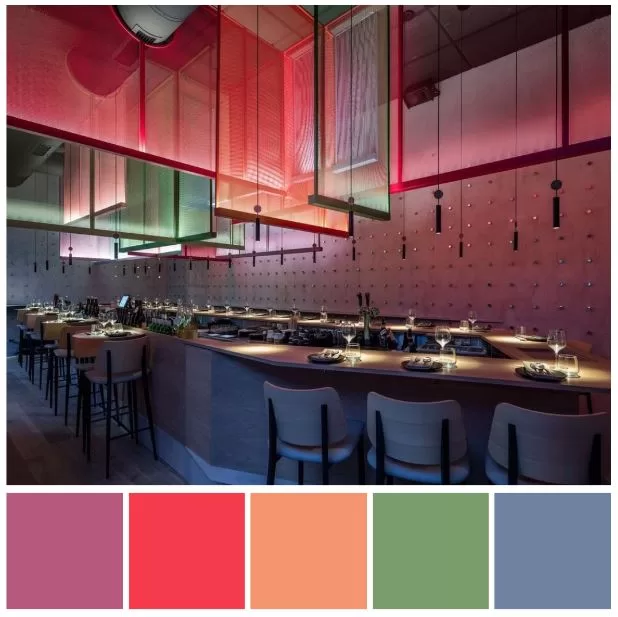
4. Textures and Patterns
-
Incorporating textures and patterns into the wall design adds depth and visual interest. This can be achieved through materials, finishes, or even paint techniques.
4.1. Textured Walls
- Plaster or Stucco: Textured plaster or stucco walls can add a handcrafted, artisan feel to the space. These are often used in Mediterranean, rustic, or Mexican-themed restaurants.
- Wood and Stone Textures: As mentioned earlier, materials like wood or stone can create a tactile experience that complements the restaurant’s theme.
4.2. Patterns and Murals
- Murals: Custom murals or wall art can become the centerpiece of a restaurant’s design. They are particularly popular in trendy or themed restaurants where the walls serve as a form of artistic expression.
- Geometric Patterns: Geometric shapes and patterns, whether achieved through tiles or paint, add a contemporary and stylish element to the design.
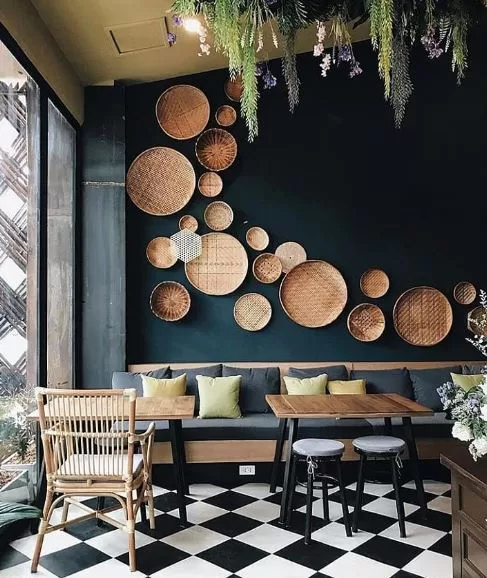
5. Lighting and Its Impact on Walls
-
The way a restaurant’s walls are lit can drastically alter the atmosphere. Lighting can highlight textures, accentuate patterns, and create focal points.
5.1. Ambient Lighting
- Overall Illumination: Ambient lighting provides general illumination for the entire restaurant. It ensures that customers can see clearly but also sets the mood, whether it’s bright and energetic or dim and intimate.
5.2. Accent Lighting
- Highlighting Wall Features: Accent lighting can be used to highlight specific wall elements, such as artwork, architectural features, or a textured wall. Wall sconces or directional spotlights can add drama and emphasis to these features.
5.3. Natural Light
- Maximizing Windows: If the restaurant has large windows, the natural light should be incorporated into the design. Light-colored walls can help reflect and amplify this natural light, making the space feel brighter and more open.
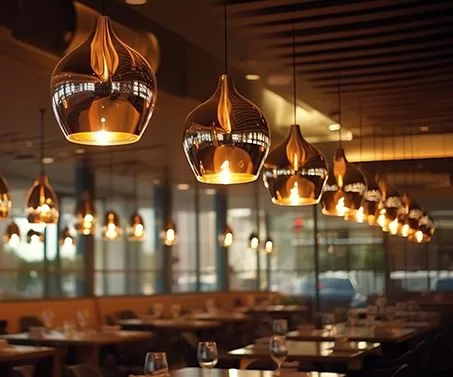
6. Decorative Elements on Walls
-
Decor plays a significant role in enhancing the restaurant’s walls and overall interior.
6.1. Artwork and Photography
- Local or Thematic Art: Many restaurants choose to display local artists’ work or pieces that align with their theme or cuisine. For instance, an Italian restaurant might feature vintage Italian posters, while a seafood restaurant could showcase marine-inspired art.
6.2. Shelving and Display
- Functional and Decorative: Shelving units can be used both functionally and decoratively, displaying wine bottles, plants, or books to enhance the restaurant’s character.
6.3. Greenery and Vertical Gardens
- Biophilic Design: Incorporating plants or vertical gardens into the wall design can make the space feel more refreshing and natural. This is particularly effective in restaurants with a focus on organic, healthy food.
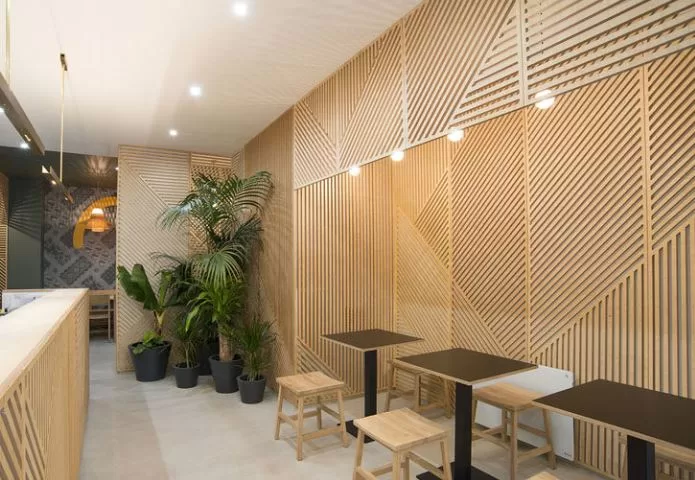
7. Practical Considerations
-
Restaurant wall design must also take into account practical considerations like durability, maintenance, and compliance with health and safety regulations.
7.1. Durability
The materials chosen for the walls must withstand the wear and tear of a busy restaurant environment. High-traffic areas, especially near entryways or kitchens, should be designed with durability in mind.
7.2. Maintenance
Easy-to-clean surfaces are essential, especially in dining areas and kitchens. Materials like tile, washable paint, and treated wood can help maintain the restaurant’s cleanliness and hygiene standards.
7.3. Acoustic Treatment
If the walls are made of hard materials like stone or tile, adding acoustic treatments like fabric panels or upholstered wall sections can help reduce noise and create a more comfortable environment for diners.
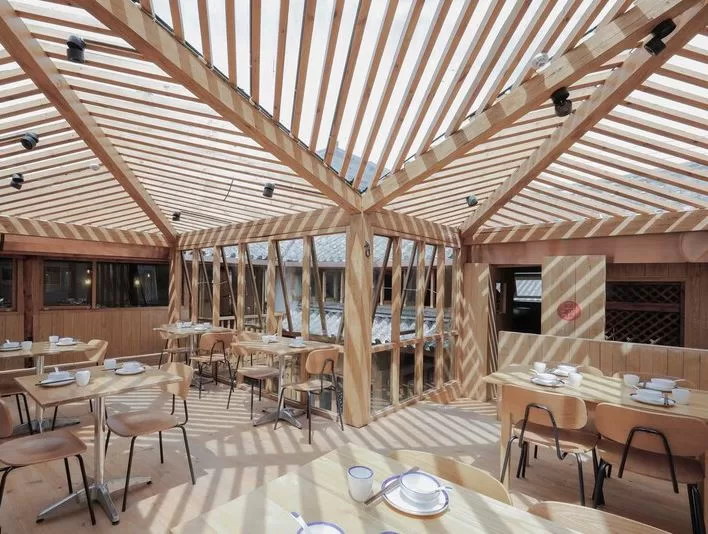
conclusion
Restaurant wall design is a multifaceted aspect of interior design that involves balancing aesthetics with functionality. From choosing materials and colors to incorporating lighting and decor, each decision contributes to the overall atmosphere and dining experience. A well-designed restaurant wall not only reflects the brand’s identity but also ensures that the space is comfortable, inviting, and practical for both customers and staff. By carefully planning and considering each element, restaurant owners and designers can create a space that enhances the dining experience and sets their establishment apart.
About Author sudeshna mukherjee
You May Also Like…
The Ultimate Guide to Hiring a Consultant Chef
Introduction Food trucks or mobile food trucks is an idea that has arrived. But, there is a issues with food safety in...
Food Safety Essentials: Addressing 5 Common Problems in Food Trucks
Introduction Food trucks or mobile food trucks is an idea that has arrived. But, there is a issues with food safety in...

